The 2nd Parachute Division, or some of it, was tasked with defending Brest under Generalleutnant Hermann Bernhard Ramcke. Ramcke was one of only twenty-seven men in the armed forces who were awarded The Knights Cross, with Oak Leaves, Swords, and Diamonds. The defense of Brest was considered of the highest importance, because the Allies desperately needed a port to use in Northern France. The only problem for the 2nd Parachute Division was after its mauling in Russia, the division was badly in need of men and supplies. An American assessment of its strength put it at 35% of its full complement. Ironically, for the Allies, the fight to conquer Brest so totally destroyed the city that it was unusable as a port. In fact, after the war, French authorities were even considering not bothering to rebuild the city where it was. The author shows us all of this desperate fighting.
Hitler's Paratroopers in Normandy The German II Parachute Corps in The Battle For France,1944 by Gilberto Villahermos...

For your Wargamer, Toy soldier collector, MiniFig collector, military history nut. Reviews, interviews, Model Making, AARs and books!
Hitler's Paratroopers in Normandy: The German II Parachute Corps in The Battle for France,1944 by Gilberto Villahermosa
The 2nd Parachute Division, or some of it, was tasked with defending Brest under Generalleutnant Hermann Bernhard Ramcke. Ramcke was one of only twenty-seven men in the armed forces who were awarded The Knights Cross, with Oak Leaves, Swords, and Diamonds. The defense of Brest was considered of the highest importance, because the Allies desperately needed a port to use in Northern France. The only problem for the 2nd Parachute Division was after its mauling in Russia, the division was badly in need of men and supplies. An American assessment of its strength put it at 35% of its full complement. Ironically, for the Allies, the fight to conquer Brest so totally destroyed the city that it was unusable as a port. In fact, after the war, French authorities were even considering not bothering to rebuild the city where it was. The author shows us all of this desperate fighting.
Gorizia 1916 La Sesta Battaglia dell'Isonzo The Sixth Battle of the Isonzo by Europa Simulazioni Wor...

For your Wargamer, Toy soldier collector, MiniFig collector, military history nut. Reviews, interviews, Model Making, AARs and books!
Gorizia 1916 La Sesta Battaglia dell'Isonzo (The Sixth Battle of the Isonzo) by Europa Simulazioni
Gorizia 1916
1120 die-cut counters
Standard rules and Scenario Instructions (three small and one large Campaign Scenario)
Charts, tables
Dice
Box
The game is played in daily turns.
It comes with a campaign game of twelve days (August 6th to August 17th).
Just so we understand each other, this is an old school wargame. There are no plastic soldiers, it is not card driven, or do wooden blocks come with it. It is a dyed in the wool wargame whose antecedents are SPI and Avalon Hill. This game, except for the deeper rules and better done components, would be right at home on a table forty years ago. This is a deep simulation of World War I trench warfare on The Italian Front. This is the Sequence of Play:
1. Reinforcement Phase
2. Command Phase
3. Initiative Phase
4. Weather Phase
5. Supply Phase
6. Artillery Phase
7. Event Phase
8. Initiative Player Action Phase
A. Tactical Movement and Assault Declaration
B. Offensive bombardment
C. Defensive Fire (by the Non-Initiative Player)
D. Assault Resolution
E. Counter-Assault Declaration (by the Non-Initiative Player)
F. Counter-Assault Defensive Fire
G. Counter-Assault Resolution (by the Non-Initiative Player)
H. Action Completed
I. Opponent Reaction
At the end of step I, the Initiative Player can perform another Action Phase, repeating Phase 8 with another Brigade he has planned to activate, or he can 'pass', leaving the decision to the Non-Initiative Player to go to Phase 9 or pass in turn.
9. Non-Initiative Player Action Phase
A. Tactical Movement and Assault Declaration
B. Offensive bombardment
C. Defensive Fire (by the Initiative Player)
D. Assault Resolution
E. Counter-Assault Declaration (by the Initiative Player)
F. Counter-Assault Defensive Fire
G. Counter-Assault Resolution (by the Initiative Player)
H. Action Completed
I. Opponent Reaction
10. Non-Activated Unit Movement Phase
11. Replacement and rally Phase
12.Victory Condition Check Phase
There are rules about the following:
Logistics and initiative
Command
Supply
Bombardment
Interdiction
Force march
Disorganization
Fog of War
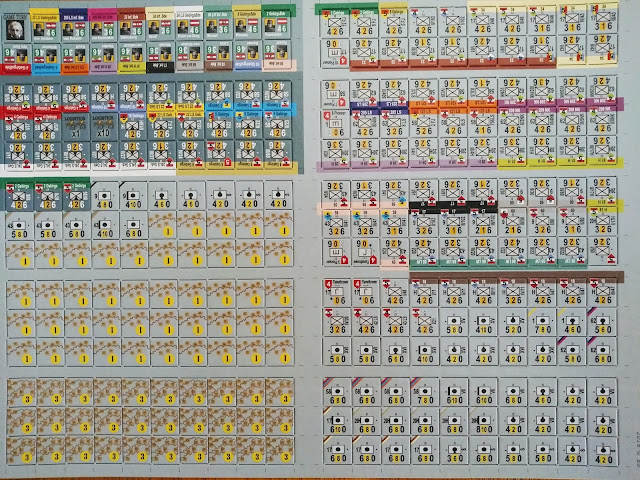 |
| Austro-Hungarian |
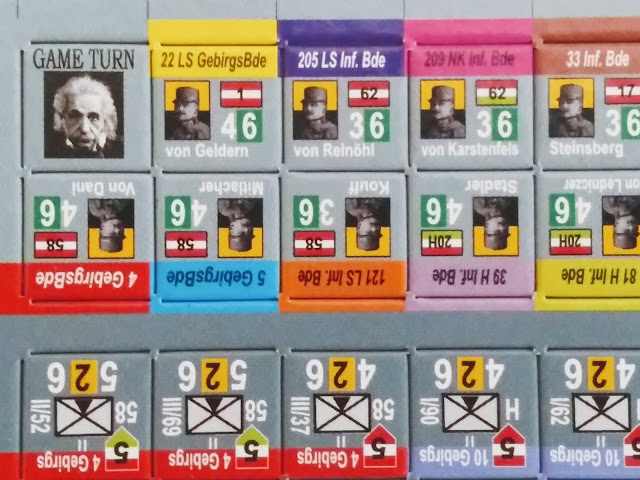 |
| Is that Albert Einstein as the Game Turn Marker? |
In summation, this is a great game on an obscure subject that more people should be playing. When you go the the Europa Simulazioni site, take the time to browse through their other games. I own several and they are just as well done. Thank you Europa Simulazioni for the chance to review this game.
Europa Simulazioni:
http://italianwars.net/
Gorizia:
italianwars.net/games/gorizia_1916
My review of Europa Simulazioni's La Guerra Di Gradisca 1615-1617:
https://www.awargamersneedfulthings.co.uk/2019/12/la-guerra-di-gradisca-1615-1617-by.html
Robert
Here's a link to Part 1 in case you missed it. The Kingdom of Graykeep has already plunged head first into a new age of progr...

For your Wargamer, Toy soldier collector, MiniFig collector, military history nut. Reviews, interviews, Model Making, AARs and books!
Shadow Empire Preview: The Graykeep AAR Part 2

One matter , for example, is whether or not we should interact with an ancient AI computer found in some deep ruins back in Hawking. The machine predates all of our known histories and could give us some interesting revelations. It could cause us problems as well. In the spirit of boldness, I direct our scientists to turn it on and see what happens. The AI gives us a lengthy lecture on ethics, and then supplies the knowledge needed for us to produce more effective firearms. The ethics we take into consideration, the firearms we prepare for production.
Production, however, requires resources, and my advisors point out to me that we won't be able to build any of the nice new things they have been researching until we secure our own supplies of them. Namely, metal. Our militia army is fine for now, but if we want to build anything better, we need metal. Our dirt roads are fine for now, but if we want to build railroads, we need metal. If we want to expand our industrial base, again, metal. To that end I stop by the economic council meeting and direct them devote the vast majority of their funding to prospecting for resource deposits. The more passive approach I've taken so far has not yielded any results. I have the military continue to explore and bring more territory into our kingdom, hopefully increases the chances we will strike metal.
In the meantime I've begun buying metal on the limited open market. We have an excess of funds at the moment, since we aren't building much of anything (need metal!) and so buying it outright will get things moving for now. I quickly learn that buying too much of one resource causes the price to sky rocket for a time, and vice versa, selling a large amount of food, something we have quite a lot of, causes its price to plummet. As a result, the amount of metal we can acquire at any one time is limited, but useful for finishing some construction projects we started long ago but never had the resources to complete.
There is one nice economic development, the first private construction pops up near the agricultural domes we built early on. A town to support the workers pops up on its own accord, and begins paying taxes. An excellent development indeed!
Another internal matter comes across my desk. This one is a bit of a touchy subject. The Church of Syndic, by far the most popular cult within my kingdom, requests a hefty donation from the state to fund their ultimate project. They want to create some sort of super computer to solve all of our problems. Such cults are fairly common on our world, though each has its own objectives. Quite a few of my own staff are Syndic sympathizers, and they would be quite upset with me if I refuse, not to mention the church itself being cross with me. They point out that they have donated multiple priests to augment my forces by strengthening their resolve, at no cost at all to the state. In the back of my mind, I am wary of using such priests in our forces, I can't help but think that seeding too many of them among the companies might lead to some sort of insurrection. That said, they do greatly benefit the troops they accompany.
I decide it is in the best interest of keeping everyone happy to make the hefty donation. That's money we could have used to buy more metal and other resources, but a kingdom is more than just buildings and roads, it must have a happy populace as well. Zelaria, our most powerful neighbor, is at it again with the demands for tribute. I can see their forces build up along our border at times, making everyone nervous. I tell them to shove off this time and the next. Not only because our forces now stand ready to repel any invasion, but also because I don't have that kind of money to spare at the moment.
Our investment in prospecting efforts finally pays off! A metal deposit is found in the southern region of the kingdom. Now I just need to order the construction of a metal mine and we will be in business! No more shortages, no more buying at exorbitant prices on the open market! We can really make some progress with a steady flow of materials. Oh, what's this? My construction chief is telling me that the site is too far away and outside of our logistics network. Apparently building such a facility in the middle of nowhere with no way to transport workers and construction equipment to the site is a problem. Ah, well, that makes sense. I consult the writings of my father (the game manual) and realize that I have indeed been neglecting the logistical side of things. Simply building dirt roads is not enough it seems. I order the construction of some transportation centers to get trucks on the road and supplies moving. Once again I'm forced to buy metal on the market to speed up the process.
In the meantime, I look out across my kingdom. We have expanded further than I ever expected by this point. So far out in fact that our units can't be supplied and we begin losing contact with a few of them completely. Logistics really are important it seems! Being a king in this world is far more involved than simply ordering armies around. It requires management of trade, diplomacy, logistics, personal relationships, and more, in far greater detail than one might ever suspect. It looks like I've still got a lot to learn, but things are going quite well in the Kingdom of Graykeep. For now...
Shadow Empire is coming out soon from Slitherine Games. Stay tuned for more coverage of this fascinating title!
- Joe Beard
HOW THE WEST WAS SAVED: THE RUSSO-POLISH WAR FROM STRATEGEMATA Another fairly obscure war for many of us in the Western hemisphe...
For your Wargamer, Toy soldier collector, MiniFig collector, military history nut. Reviews, interviews, Model Making, AARs and books!
HOW THE WEST WAS SAVED
As I have both the latest from Compass Games and Academy Games' very different system, I was delighted to be sent a review copy from the Polish company, Strategemata, of their game on the topic with its exceedingly long title, How the West was Saved: the Russo-Polish War!
I admit that I had strong expectations that I would enjoy the game. since the designer was Stephen Pole and the system used here is a modification of the one used in his three games covering WWII. The latter are all in my collection and provide a highly playable and enjoyable system. Also, they were all produced by White Dog Games and so I was equally interested in how the change to the Polish company Strategemata would affect the look of the components.
I'm pleased to say that the evolving and improving quality noted in my recent review of The Last Vikings continues. First to be noted is a very clear and simple mounted map.
On the left edge there is an equally clear and eminently readable terrain chart and on the right edge is the Turn display with the crucial number of Resource Points for each player, the list of victory point cities, the turn sequence and a large bold graphic explaining a unit's various factors. Though not usually over-keen on terrain displays on the playing board, perhaps because so many are not user friendly, this is so easy to read and commit to memory that I was more than satisfied.
Random Events
Determine Resource Points
Depot Actions
Check Supply Status
Combat Unit Movement
Combat
Restoration of Units
Reinforcements
Much of this is quick and easy both to learn and to play. So, Random Events as we've seen is simply each player playing and revealing a single card which will be executed at the appropriate stage that it applies to.
The number of each player's Resource Points is printed on the Turn Track and supplemented by the roll of two dice: one white D6 - a positive die and one red D6 - a negative die. So each player may gain or lose from -5 to +5. On the whole, there aren't major swings, but the possibility is always there. A nice simple effective rule.
It is these Resource Points that are the heart of this system engine. First of all they are the "currency" to pay for virtually everything that happens in the game, starting with the next Phase: Depot Actions. Here each player places alternately one new Supply Depot and, like nearly every single action in the game, the moment you decline to take the appropriate action for a Phase then you cannot take any more of that type of action. Once both players have finished laying new depots you've got to pay for all that are now on the board out of your Resource Points. This chain of Supply Depots is absolutely vital, for in the next Phase [Check Supply Status] every full strength unit that is now out of supply is flipped to its weaker side and if already flipped is now eliminated! Easy, effective and DEADLY!
Next comes Combat Unit Movement which again is done alternately. Each stack of units that is moved costs one Resource Point and all the units chosen in a single stack must end in the same hex. With resource points in short supply, there won't be too many movements made, which is another factor that makes this game run smoothly and swiftly. Next comes Combat, again executed by each player alternately choosing to carry out one combat at a time and once again if a player declines to carry out a combat then they cannot carry any more later in the Phase. This cat and mouse, back and forth interaction is one of the elements that I relish strongly.
The only things you don't pay for are your reinforcements and the limited number of four redeployments per player. Finally, the rules conclude with a rare few Special Rules. Overall, though the rules have relatively few illustrations and everything is in simple black and white, the clarity of the rules means that these are all that's needed.
Combat, though straightforward, is the section that needs most attention, because there are some interesting and fairly novel elements. Attacks must be made through the top facing edge of the unit which shows a unit's stronger value and an attack is a single stack against a single stack. Both players add up the total strength of their units in the single stack and add 1 strength point per additional stack adjacent to the defender. Only the attacker may attempt to bring in the full strength of one additional adjacent stack, but this is at the risk of a D6 die roll. Roll 5/6 and the additional stack is added in; 3/4 the stack isn't added: BUT roll 1/2 and the whole attack is cancelled! To the final total strengths of each side is added the roll of a single D6.
Losses are dependent on the differences between scores. For the loser it's half that number rounded down, for the attacker it 's half the number of the defender's losses, This is with the added restriction that neither player can suffer more hits than the number of units inflicting the damage. To give a simple example: if the difference were 6, then the loser of the combat would provisionally suffer 3 hits, but if the winner had only two units in his stack, then the most the loser would suffer would be 2 hits.
The other rule that needs care, and I say this as someone who has considerable familiarity with this system and the rules, is the use of depots and supply. However, the care is not in understanding the rules [they are very clear], but in carrying them out. Too often in the past, when playing Steve Pole's games set in WWII have I discovered that I've miscalculated the distance. As the distance restrictions are even more stringent in How The West Was Saved to reflect the earlier historical period, you need to be even more careful.
For me, this is an excellent addition to those games already using this system. It has the lowest counter density of them all; as a result it plays even faster. The situation is more fluid and open and provides a good balance of attacking and defending for both players. What's more in these unusual and constrained times where solo play is the enforced norm [unless you're playing online], it plays very well solitaire with only the play of Event cards being slightly problematic.
So many thanks once more to Strategemata for supplying my review copy.
Approx. $65
Available in the UK : £59.95 from Second Chance Games
These are interesting times we’re living in. As a gamer you may think that our options to play games are limited but in my experience no...

For your Wargamer, Toy soldier collector, MiniFig collector, military history nut. Reviews, interviews, Model Making, AARs and books!
Caylus 1303
Gameplay
 |
| Initial setup for 4 player game. |
 |
| Table Top Simulator - opening splash |
 |
| Some of the Characters |
 |
| First Round Planning Completed |
 |
| A small selection of the Starting, Wood and Stone Buildings and Monuments |
 |
| 4 Players in the 8th (penultimate) round |
Components
 |
| Fantastic insert |
Criticisms
 |
| A clean and short rulebook |
Conclusion
 |
| Waiting to play IRL |

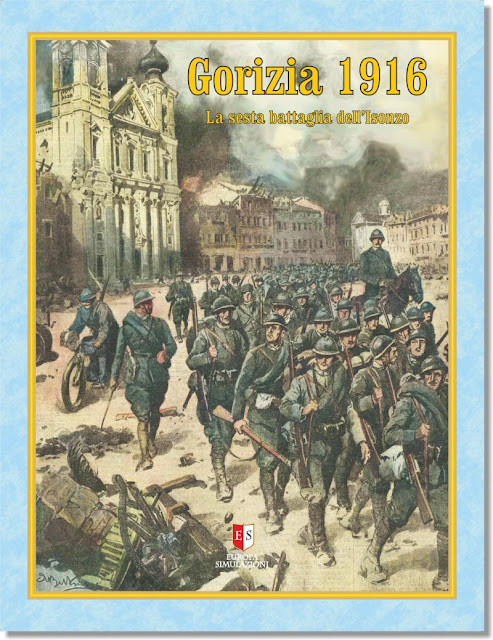



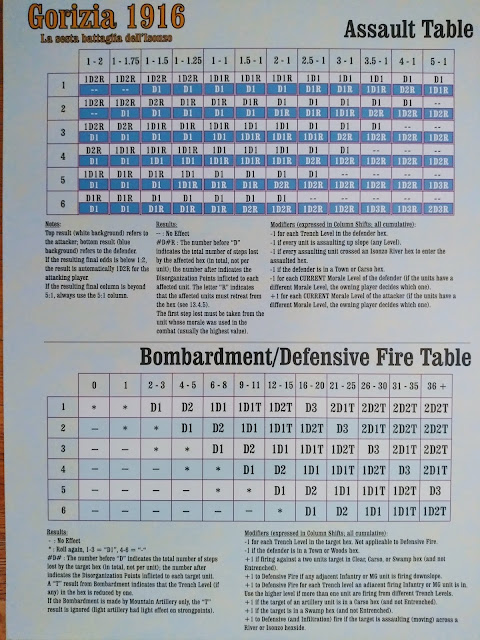

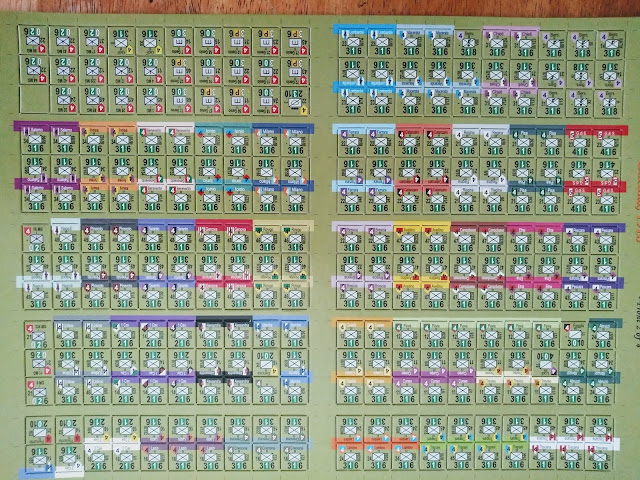
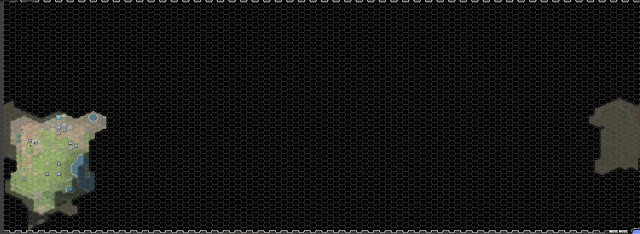








Follow Us